We’ve been focused lately very much on Russia, Iran, and the Middle East. But the current state of war is very much a global one. Yes, China is at the center of Anglo-Zionist war plans, but the position of China geostrategically inevitably draws in all of SE and South Asia. So let’s look at that region briefly, because there are important events taking place.
The US has been openly “predicting” (promising?) that it will attack China by 2025. Yes, I did carefully consider what I just wrote. China has no intention of attacking the US, so if a war breaks out it will only have been instigated by the US. Now, this doesn’t mean that war will begin with a massive missile attack. It is more likely to begin as an economic war or, more specifically, an energy war. That is the type of war the US has been preparing for years—via regime change/color revolutions in all countries that are located along China’s trade routes—Pakistan, Bangla Desh, Myanmar, Thailand—to insure that they will participate in a blockade of China.
This is also more or less the template that the US has been following in our war on Russia and Iran. Yes, we are in a hot war with Russia, but not a full out war as regards our own military. The same could occur in the Far East—if we could find a proxy like Ukraine that would be willing to accept national destruction. I continue to believe that the Chinese on Taiwan are smarter than that.
Here are two nice tweets to explain what’s going on. The whole ongoing business about naval tensions in the South China Sea and China’s seemingly aggressive behavior toward some of its neighbors, and Taiwan in particular, is about China’s fear of being strangled economically by being deprived of Middle Eastern oil. A rough comparison might be if the US were heavily dependent on Venezuelan oil and Russia began a military buildup of Cuba, while announcing that war with the US was inevitable in the near term. The US activity in the Southeast Asian and Far Eastern regions is precisely based on the strategy of enabling a sudden and near complete shut off of the flow of energy to China. Of course, China has been stockpiling energy as well as opening new pipelines and sea routes for Russian energy. However, this US strategy is a real threat. The US has been busily putting the political and military infrastructure into place:
Why #Bangladesh became critical for US empire.
China faces a blockade in Malacca Strait - in case of an American war
Thus, to circumvent that, China wants to develop two escape routes in Pakistan & Myanmar.
US coups in Pakistan (2022) & Bangladesh (2024) are aimed at disrupting those two Chinese plans. Yes, Myanmar will be the next target for the US deep state.
We won’t be addressing the Pakistan situation in this post, but here’s a link to a post that discusses the Balochistan region of Pakistan and Iran, and the importance of its ports on the Arabian Sea: Iran Sends A Message.
The US will build military/naval bases in St. Martin, the island that belongs to Bangladesh. This will be used to not only disrupt Myanmar but also contain China and India. That’s right. The US has started targeting India as well.
Being big and neutral is no guarantee that the US will leave a country alone. We tried very hard to recruit India into our sphere of influence, partly by inducing India to become dependent on US weapons systems. India has preferred to remain neutral and non-subservient, but is finding that that isn’t acceptable to the US. Thus India has recently become somewhat receptive to Russian diplomatic overtures urging India to come to a rapprochement with China. However, it remains to be seen whether India gets the wake up call.
Now, I can’t recommend highly enough M. K. Bhadrakumar’s latest article, which focuses at length on this situation, starting from Thailand’s so-far successful repulse of US regime change efforts. He also deals in depth with events in Myanmar and Bangla Desh. The discussion of Myanmar, which falls geographically between Thailand and Bangla Desh, is particularly important. The ethnic turmoil in Myanmar’s border region with China involves the Shan, a Tai ethnic group with ties to the large Tai minorities in SW and Southern China—as well as across SE Asia:
I can see US covert actions to destabilize China’s southern border regions to hamper trade route development through Thailand and Myanmar, using Tai unrest as a lever. There are already reports of American and British “volunteers” working with the Shan forces in northern Myanmar. That can’t be coincidence, so close to the Chinese border.
MKB’s concerns are ultimately mostly focused on the effects on India. Because this article is quite lengthy I’m going to hack up some excerpts. Just place all this in the overall context:
The curtain has come down on the abortive colour revolution in Thailand with the country’s Constitutional Court ordering the dissolution on Wednesday of the anti-establishment opposition party Move Forward, widely regarded as a US proxy.
It coincides with the stunning success of the hastily [US] staged colour revolution in Bangladesh and the fall of the key military base of the Myanmar army’s Northeast Command in Lashio in the Shan state over the weekend to the Myanmar National Democratic Alliance Army, the rebel groups armed, financed and trained by the Western intelligence.
The Shan people who belong to the Tai ethnic group of Southeast Asia are the biggest minority of Myanmar (10% of the population) ...
The capture of Lashio by the alliance of militias of ethnic minority groups supported by the western intelligence is seen as a serious blow to the regime in Myanmar, which enjoys the backing of the military leadership in Thailand and is a strong ally of Russia.
Lashio is situated on an important trade route and is about 100 kms only from the Chinese border. Newsweek magazine in a report titled China Faces Growing War on Its Border cited an expert opinion of the Washington-based United States Institute of Peace think tank (which is wired into the US intelligence establishment) that “From China’s vantage point, the escalation of the conflict is a major setback in terms of its interest in… getting the belligerent parties to establish further deals to reset trade between the China border and Mandalay.
…
According to latest reports, American and British “volunteers” have been lately joining the ranks of the rebels fighting the Myanmar military — ...
…
Coming back to Bangkok, the Thai generals are evidently circling the wagons sensing the Time of Troubles ahead as the Five Eyes is creating a cauldron in Myanmar that can ensnare the neighbouring regions. Bangkok, a western ally previously, is traditionally a hotbed of western intelligence — Five Eyes — and the authorities are well aware of the resentment in the US that their ties with Beijing have expanded and deepened and assumed a strategic character in the recent years.
The unkindest cut of all is that Thailand (along with Malaysia) has formally applied for membership of the BRICS, ...
Thailand is a keen participant in China’s Belt and Road Initiative. From a long term perspective, the 873-km high-speed rail project connecting Bangkok with Kunming, capital of China’s Yunnan province, via Laos is expected to be operational latest by 2028.
…
Washington is livid that its proxy, Move Forward led by a young man educated in the US and groomed to spearhead a colour revolution, has been banned. ...
The Thai authorities have shied away from confronting the US. ...
…
However, all is not lost. The regime change in Bangladesh may open a new pathway for the western intervention in Myanmar. India and Thailand refused to back the western-backed rebels fighting the Myanmar military. Former Bangladesh Prime Minister Sheikh Hasina also stayed away from the power struggle in Myanmar. But that may change.
The Rohingya [Muslim] issue provides an alibi. The ascendance of Pakistani intelligence and the larger-than life role of the Jamaat-i-Islami will trigger an assertion of Bangladesh’s Muslim identity. The Pakistani army chief lost no time to underscore that the developments in Bangladesh underscore the raison d’être of the two-nation theory!
So, the regime change in Bangladesh may turn out to be a game changer for the West’s regime change agenda in Myanmar. ...
MKB concludes by bemoaning the lack of awareness of India’s diplomatic and political elites of the dangers for India in all this. Meanwhile almost none of this, and the march to war with China, is being discussed so far in the presidential political season. The big question is, where will Trump/Vance stand? Americans prefer to think about American politics, but the Deep State and Anglo-Zionist imperial circles have their own plans which will inevitably intrude on all our lives. An argument could be made that Trump as president basically followed a strongly Neocon foreign policy, except that he failed to follow the script quite closely enough to suit the Deep State, had a few independent ideas. Sadly, I don’t see the country being provided with a real debate on these issues that will shape our lives.



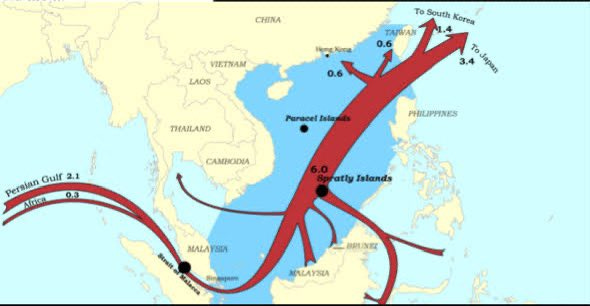
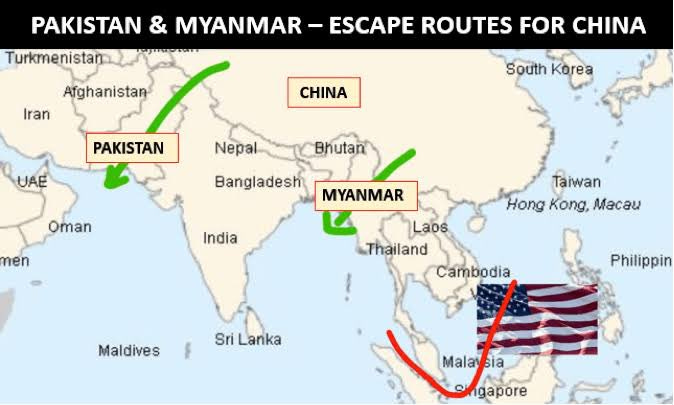
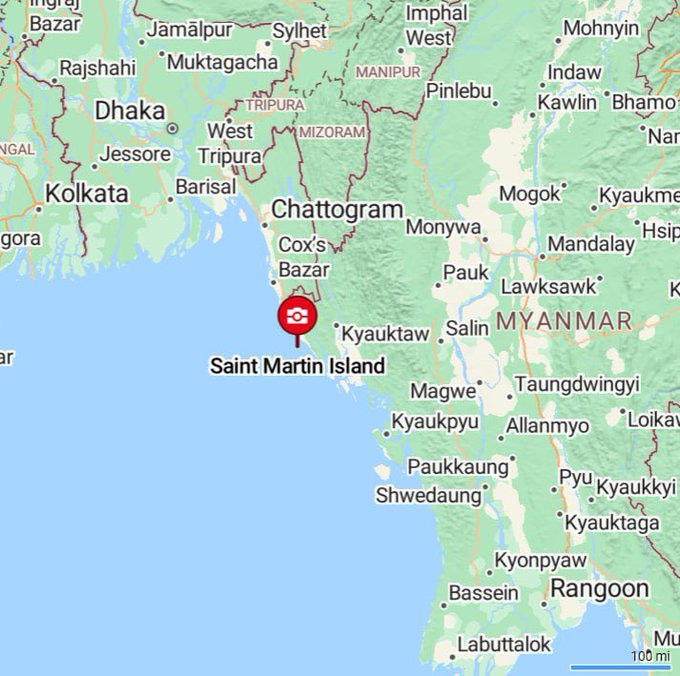
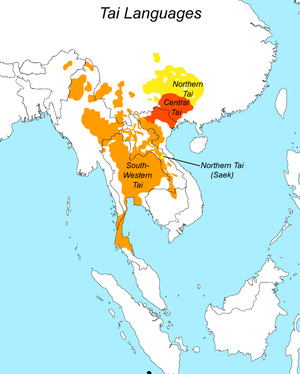
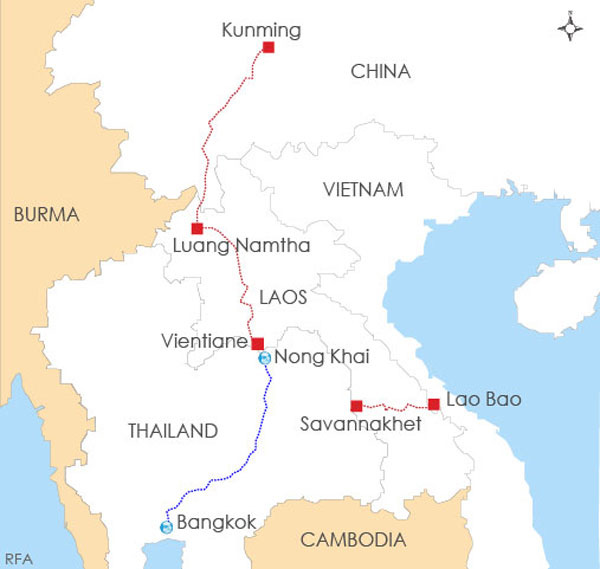
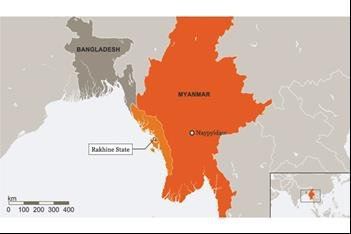

When you see all these color revolutions/regime changes around the world, it makes you wonder about our own politics.
Megatron @Megatron_ron
BREAKING:
  The fallen President of Bangladesh, Sheikh Hasina, said that the United States was behind the coup:
"I could have remained in power if I had surrendered the sovereignty of Saint Martin Island and allowed America to hold sway over the Bay of Bengal.
I beseech the people of my land, 'Please do not be manipulated by radicals," Hasina said in a message conveyed to The Economic Times through her close associates."